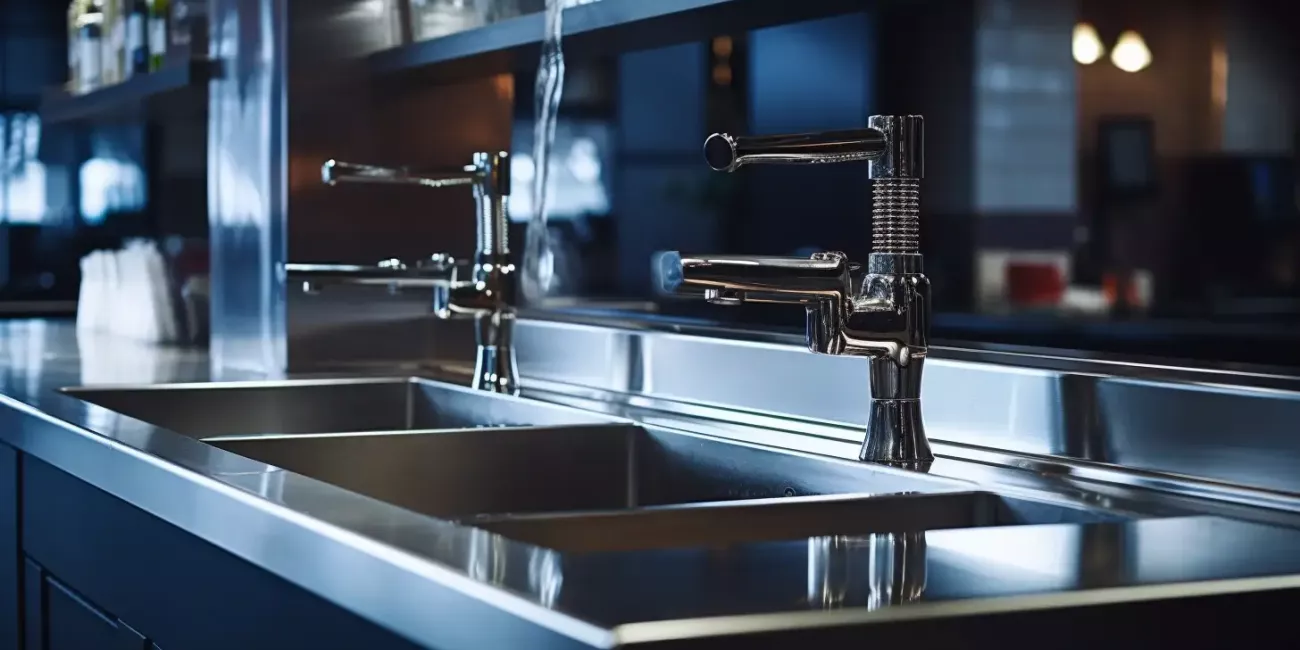In todays modern kitchens, stainless steel backsplashes have gained significant popularity. With their sleek and contemporary appearance, they instantly elevate the overall aesthetic appeal of any kitchen. Stainless steel is known for its lustrous and reflective surface, adding a touch of sophistication and elegance to the space. Whether you have a traditional or contemporary kitchen design, a stainless steel backsplash seamlessly blends in, complementing various styles and color palettes.
Advantages of stainless steel backsplashes
Durability and longevity
One of the primary advantages of stainless steel backsplashes is their exceptional durability. Stainless steel is highly resistant to corrosion, staining, and heat, making it an ideal choice for a high-traffic area like the kitchen. Unlike other materials, such as tile or laminate, stainless steel backsplashes are less prone to cracks, chips, and fading over time. They can withstand heavy use and are resistant to the wear and tear of daily cooking activities.
Hygienic and easy to clean
In a kitchen, maintaining cleanliness and hygiene is crucial. Stainless steel backsplashes are non-porous, which means they don't absorb or retain moisture, bacteria, or odors. This makes them exceptionally hygienic and easy to clean. A quick wipe with a mild detergent or stainless steel cleaner is usually sufficient to remove any spills, splatters, or grease marks. The smooth surface of stainless steel also prevents the growth of mold, mildew, and bacteria, ensuring a healthier environment in your kitchen.
Heat and moisture resistance
Stainless steel backsplashes exhibit excellent resistance to heat and moisture. They are highly tolerant of temperature fluctuations and can withstand direct exposure to hot pots, pans, and splashes of boiling water. Moreover, stainless steel is impervious to moisture, preventing water damage and warping that can occur with other materials. This feature makes stainless steel backsplashes a reliable choice for areas near sinks, stovetops, and dishwashers.
Installation process of stainless steel backsplashes
Installing a stainless steel backsplash requires precision and careful planning. Here is a step-by-step guide to help you with the installation process:
Measuring and preparing the area
Before you start installing the backsplash, measure the area accurately to determine the required dimensions. Take into account any electrical outlets, switches, or fixtures that might affect the placement of the stainless steel sheets. Clean and prepare the surface by removing any existing backsplash, debris, or grease buildup.
Choosing the right stainless steel backsplash
Select a stainless steel backsplash that matches your kitchen's style and dimensions. Consider the thickness, finish, and pattern options available. Measure and mark the stainless steel sheet according to your measurements, ensuring an exact fit.
Preparing the surface and applying adhesive
Ensure the surface is smooth and free from dust or moisture. Apply an adhesive suitable for stainless steel to the wall, following the manufacturer's instructions. Carefully position the stainless steel sheet against the wall, pressing it firmly to ensure proper adhesion.
Installing the stainless steel backsplash
Once the adhesive has set, secure the stainless steel sheet in place with stainless steel screws or nails. Be cautious not to over-tighten the screws to avoid damaging the sheet. Repeat the process for the remaining sheets until the entire backsplash area is covered.
Tips for maintaining and caring for stainless steel backsplashes
To keep your stainless steel backsplash looking pristine and extend its lifespan, follow these essential maintenance tips:
Regular cleaning and wiping
Frequently clean your stainless steel backsplash using a soft cloth or sponge and a mild detergent. This helps remove grease, fingerprints, and stains that may accumulate over time. Rinse thoroughly and dry with a clean cloth to prevent water spots or streaks.
Avoiding abrasive cleaners and materials
Avoid using abrasive cleaners, scrub brushes, or steel wool pads, as they can scratch the surface of your stainless steel backsplash. Opt for non-abrasive cleaners specifically formulated for stainless steel to maintain its polished appearance.
Removing stubborn stains
For stubborn stains or marks, create a paste using baking soda and water. Apply the paste to the stained area and gently scrub with a soft cloth or sponge. Rinse thoroughly and dry to restore the stainless steel's shine.
Preventing scratches and dents
To prevent scratches and dents, avoid using sharp utensils or abrasive materials directly on the stainless steel surface. Use cutting boards, trivets, or heat-resistant mats to protect the backsplash from any potential damage.
Conclusion
A stainless steel backsplash is an excellent addition to any kitchen, combining style, durability, and easy maintenance. Its sleek appearance, resistance to heat and moisture, and hygienic properties make it a popular choice among homeowners. By following proper installation techniques and regular maintenance, your stainless steel backsplash will continue to enhance your kitchen's aesthetics and functionality for years to come.

